Dear Steemit friends :
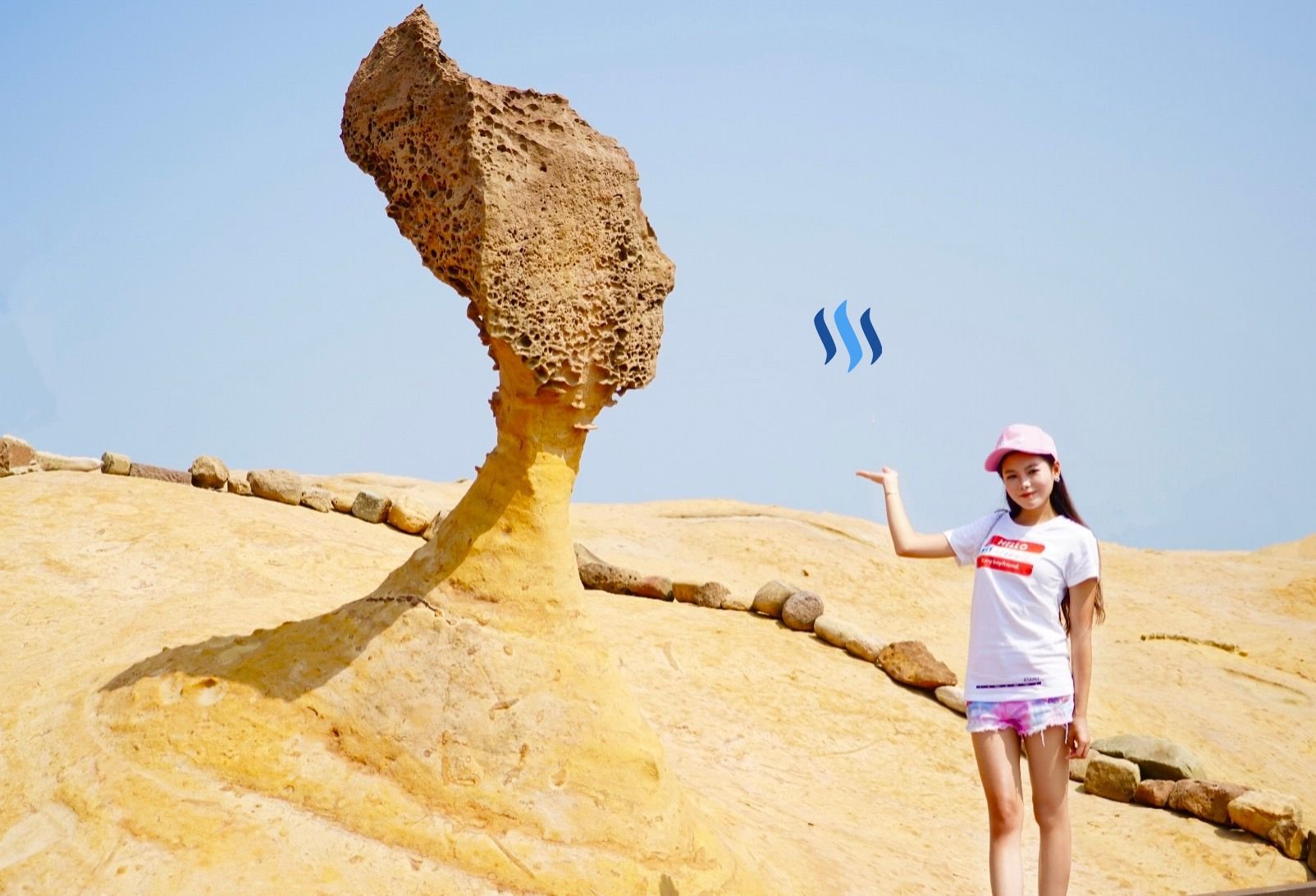
Yehliu Geopark is like another world.
There are so many reasons to visit the Formosan Island also known as Taiwan, and Yehliu Geopark is often near the top of the list of reasons. Geological formations resulting from thousands of years of attrition and erosion have gifted us with an unworldly composition of rocks. Perhaps the most iconic of these is the Queens Head, but aside from that one, there are also many other rocks in all sorts of shapes and sizes - many with their own nick names, describing their uncanny resemblances to worldly objects in the backdrop of alien landscapes. Therefore, a trip to Yehliu Geopark is like visiting another world, one with very appealing and unique geography.
The Queens Head is so iconic that it is often used as the unofficial emblem of the local town of Wanli. It, amongst other rock formations have stood against the geological forces overtime, contributing to their appearance today. It is however, a matter of time before these rocks lose their shapes forever as continuous natural geological forces erode them away.
Even though nature has it's way of going full circle, if you wish to see these natural rock formations in their mystical forms, it's definitely a good idea to visit sooner rather than later. I once visited the Azure Window in Malta, only to hear it had collapsed a year later. Nature works in mysterious ways, the beauty before us can come and then go, just like the tides from whence they were born.
Yehliu Geopark is part of the Wanli town and district, North East of Taipei along the coast. It is about 90 minutes via coach from Taipei Main Station, or about 1 hour via shuttle bus. My personal recommendation is to book a shuttle bus as they will come pick you up from your residence and drop you back as well. A common route is to pass by Keelung City on the way back. The vibrant bustling night markets there are a delight and draw visitors from all around.
From this aerial photo, you can see the 1,700 meters long cape of Yehliu Geopark, protruding out into the sea. This macro geological movement as a result of the Datun Mountains being forced out into the ocean as tectonic plates shifted.
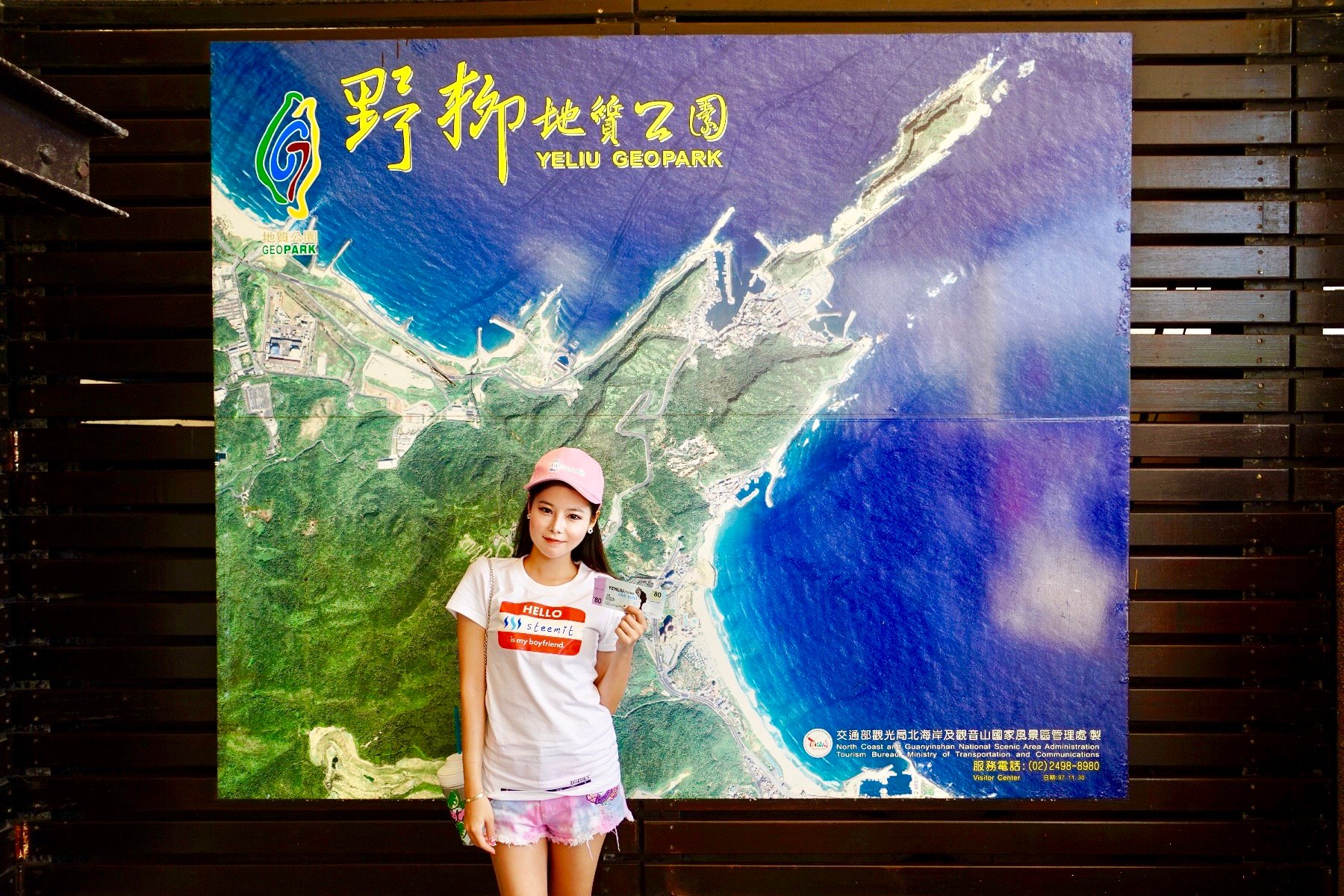
The soft rocks here form a honeycomb like window lattice. Because of the monsoon season, the rocks are subjected to many months of hard battering under humid conditions. Uneven erosion under these severe weather conditions lead to the many holes. It's really as if the holes were created by creatures who live inside. (thankfully not!)
There is pretty much just one path that leads you all the way from the entrance of the park, right to the end of the cape, where you will climb several hundred meters up a fairly steep hill. At the top, there is a lighthouse.
Even though there are beautiful rocks everywhere you look, the attention is focused squarely on the Queens Head, the most recognisable and iconic rock formation of the park.
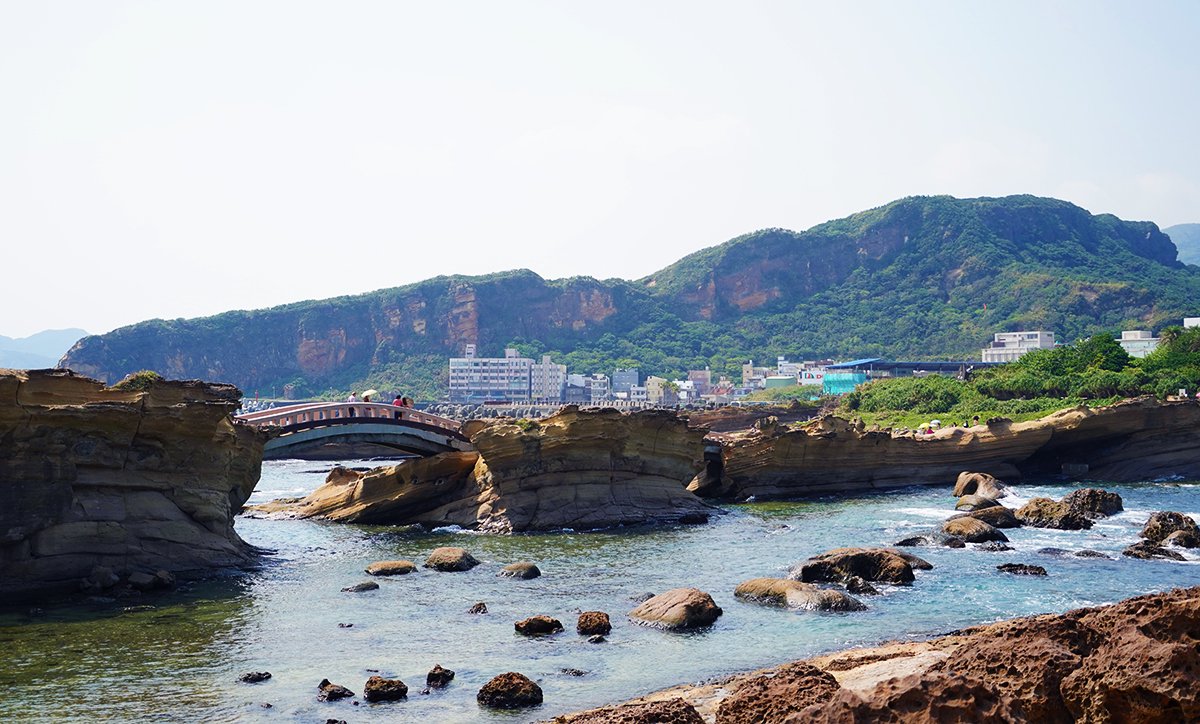
In the distance, you can see a little path with more people standing further away in the background. That is where the Queen's head is, as well as all the other Mushroom rocks.
In fact, all of the rocks were once spherical in shape. The thin pillars that we can now see supporting them are the result of faster erosion. This is due to more contact with seawater, and also because of the type of rock being more susceptible to erosion being the lower layer.
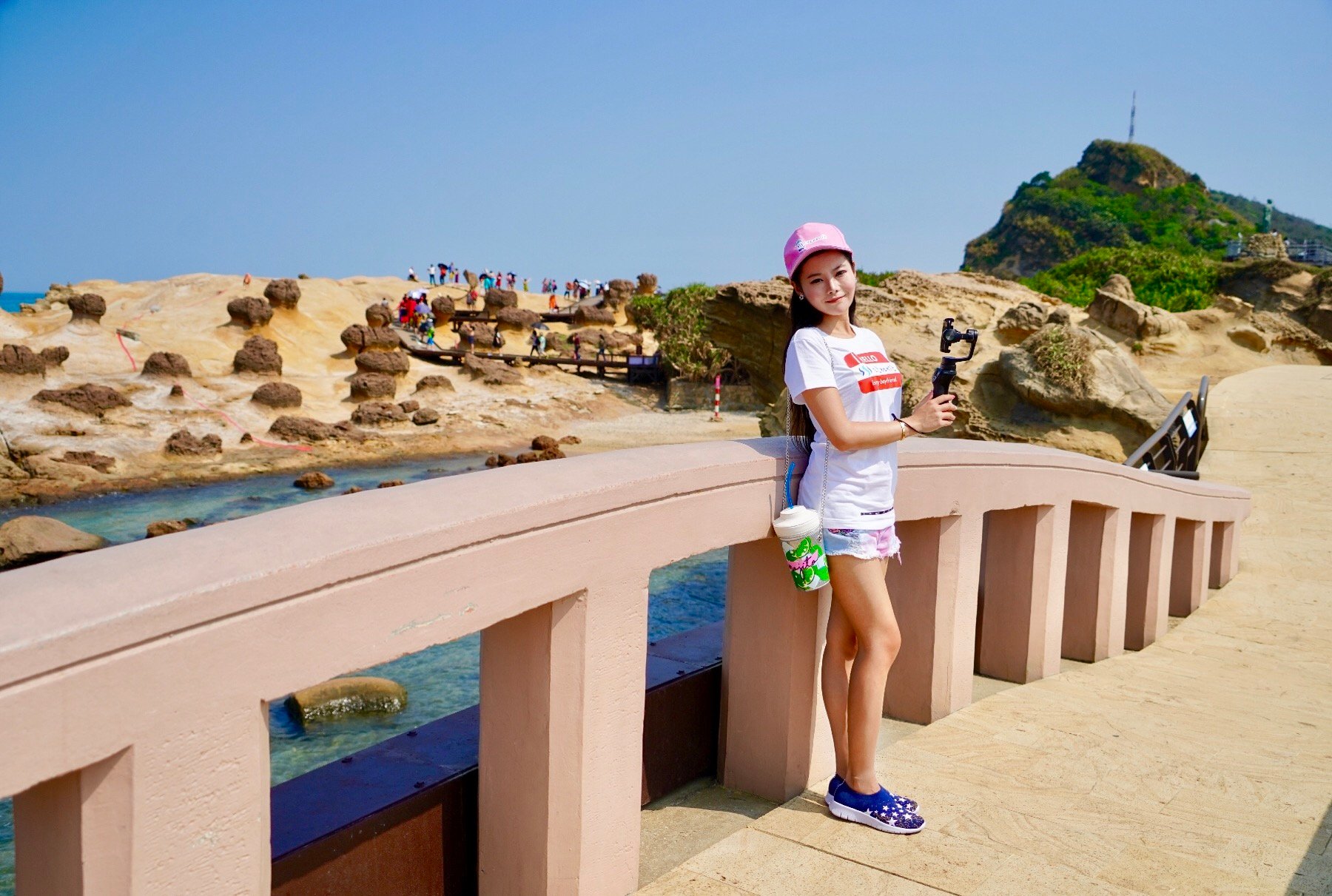
The result of this differential erosion is that we are left with the top rock layer containing more calcium, eroding slower than the lower rock layer.
There are three main types of these mushroom rocks. And they are all defined by the thickness of their 'necks' : Thin, thick, and neckless.
As time goes by, we will see the rocks cycle through neckless, thick and then thin necks as they continuously erode.
Lets take a look at some more of these amazing rocks below. Time to use your imagination and see if you can identify any of them!
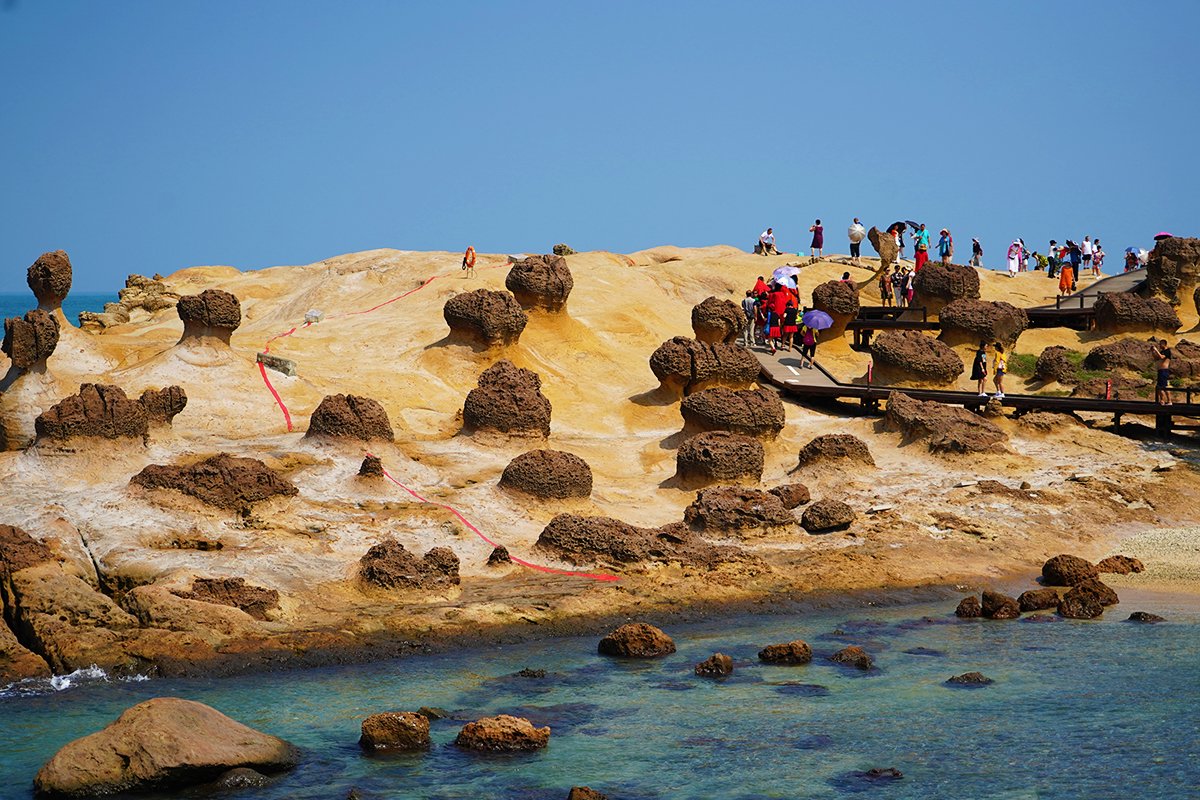
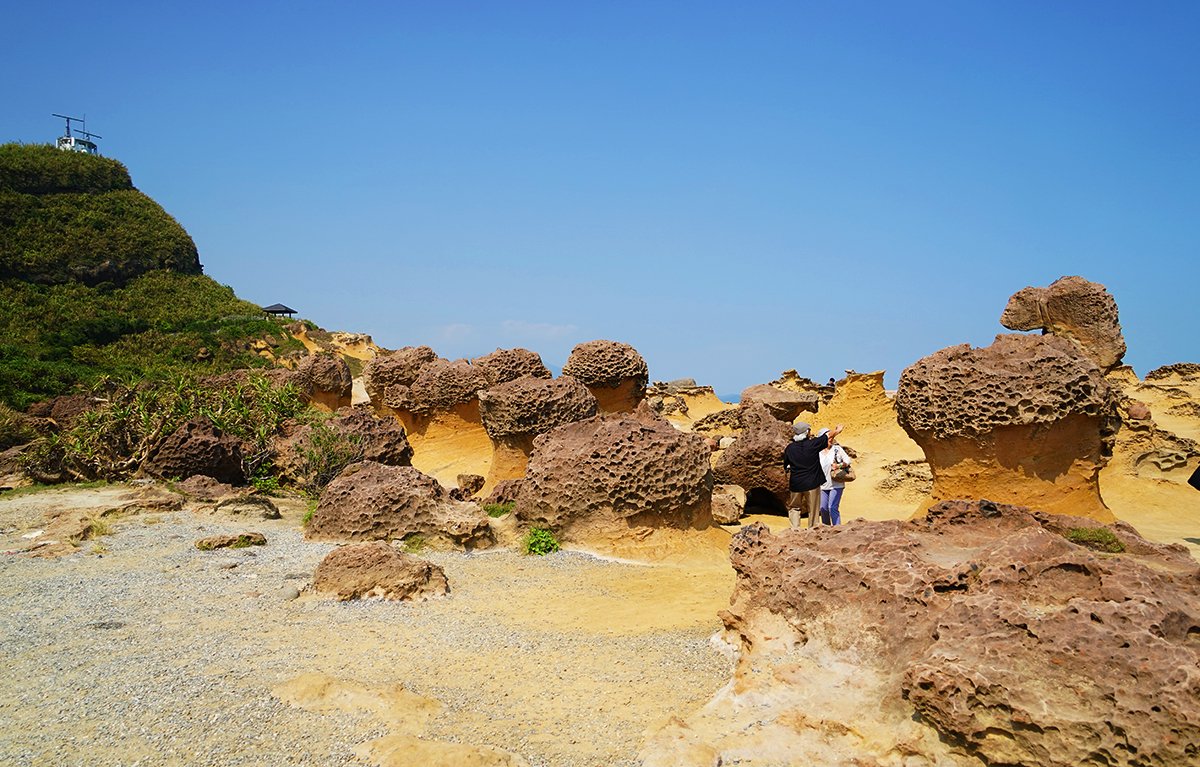
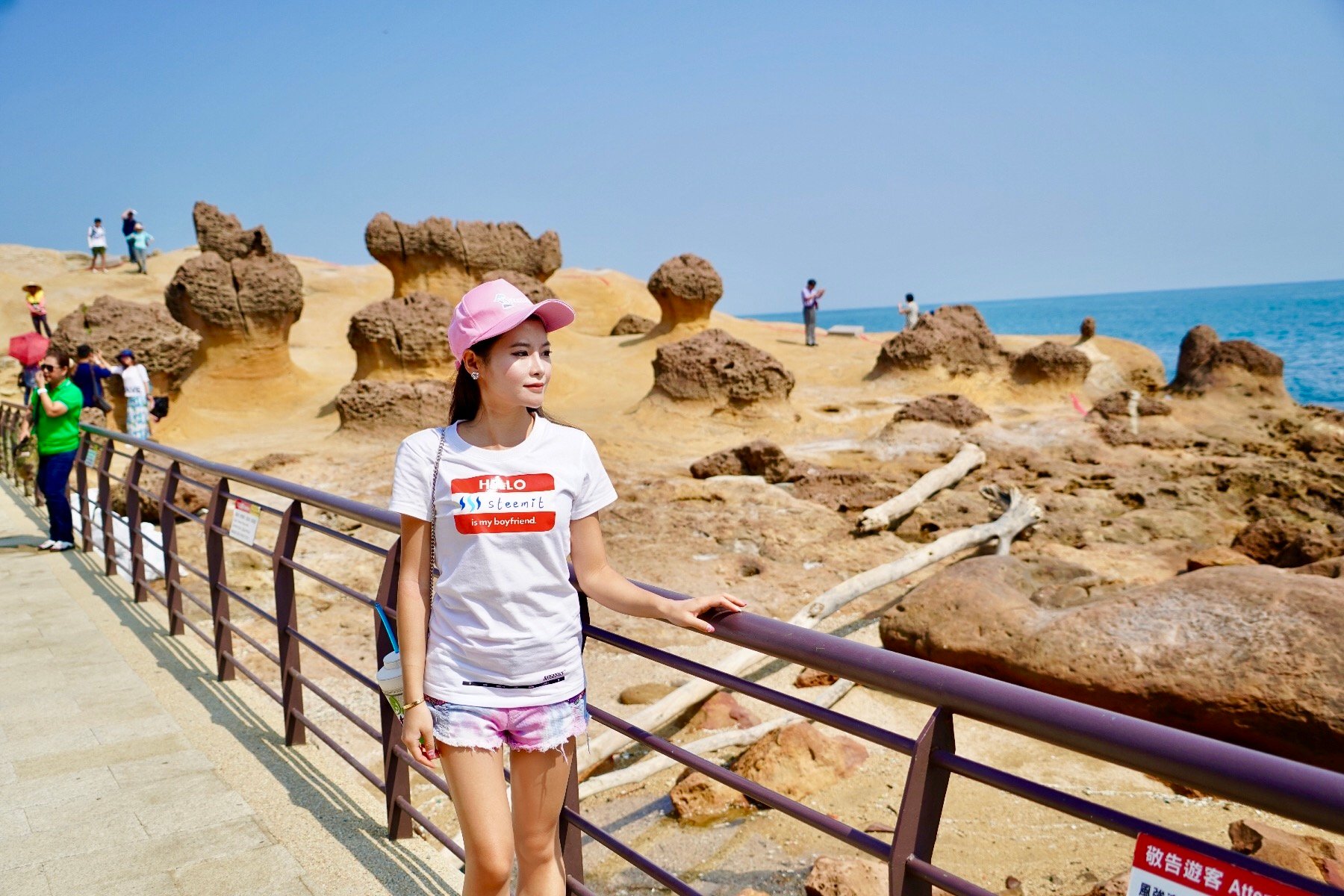
A collapsed arch, a mini version of the azure window.

In the distance, you can see the cape of Yehliu, the lighthouse, and just below it, the 24 filial piety hill.

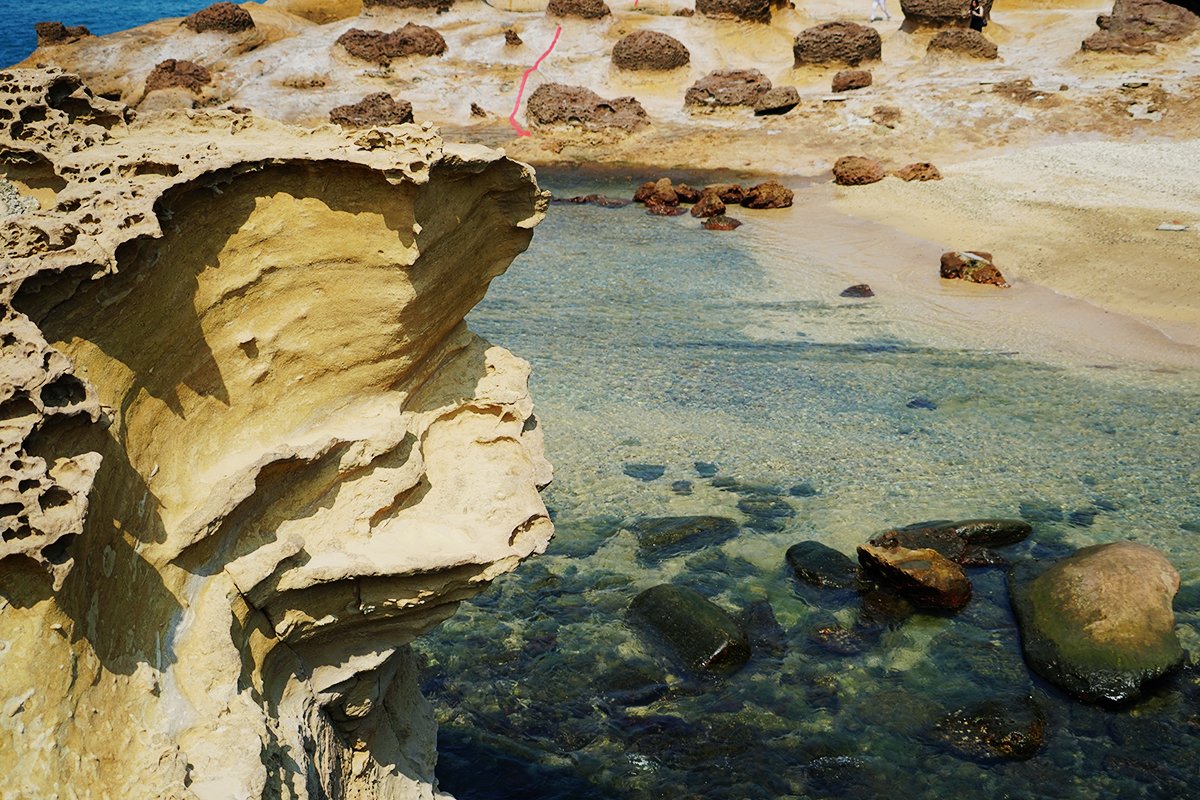
This rock has been given it's own name. You might have guessed that it is the Queens Head, but looking closely, you can see the shape is softer on the edges, almost resembling a little girl. Indeed, this mushroom rock is known as Cute Princess.
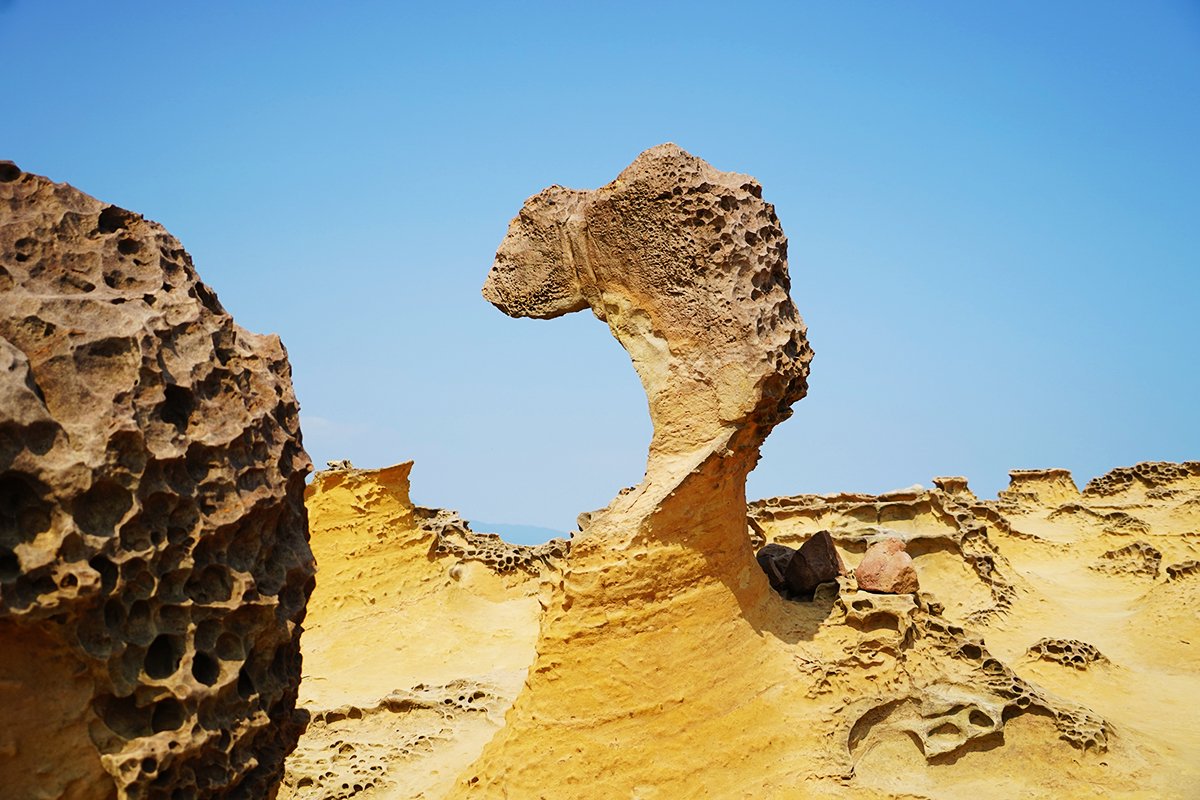
Nature's way of acknowledging the beauty of human form perhaps?
As you can see, this particular rock has a some what thin neckline. Yet, as you will see later, the Queens Head has an even thinner neckline. This means that the rock has been undergoing erosion for a very long time and that the weight of the head will soon overwhelming the neck supporting it, resulting in the head collapsing.
This is the reason that you will find sign posts for the Queen Head II and Cute Princess II near the entrance. They are replica's made from fibre-reinforced plastic, made in perfect 1 to 1 size and shape through computer modelling. In the event that the originals no longer stand, there are at least the replica's remaining.
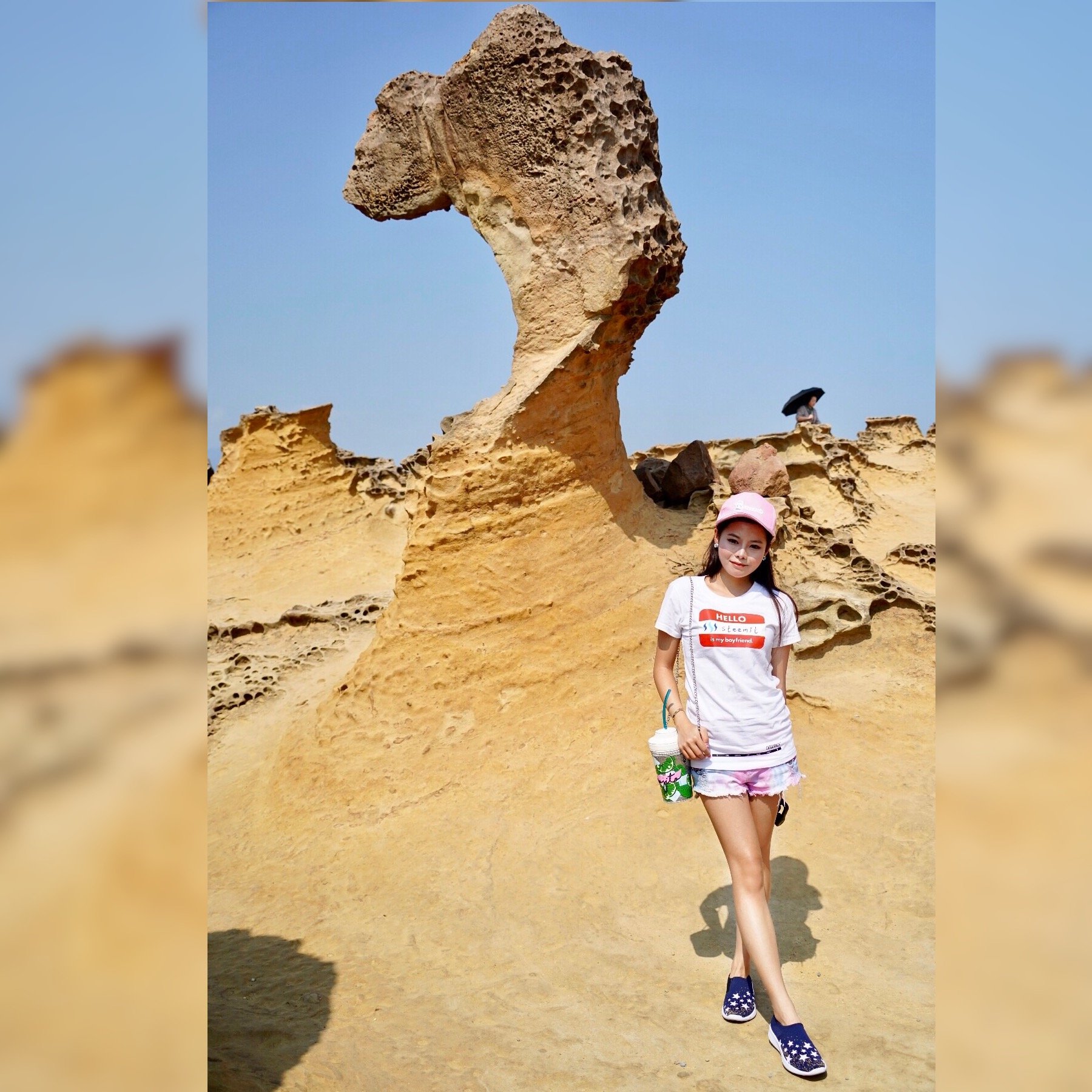
A few foot bridges lead us to the main mushroom rock section.
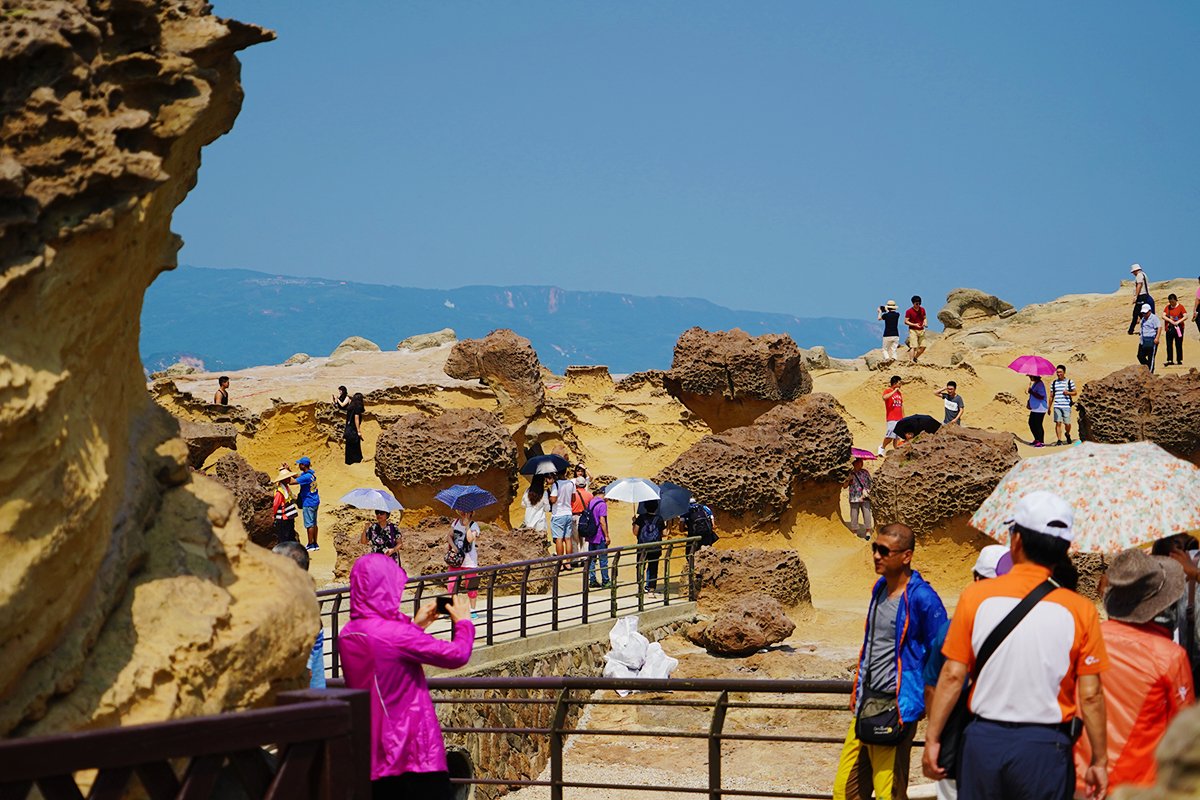
Thick-neck mushroom rocks look very sturdy, and you'll notice that the honeycomb structures on top are a different kind of rock to the neck.
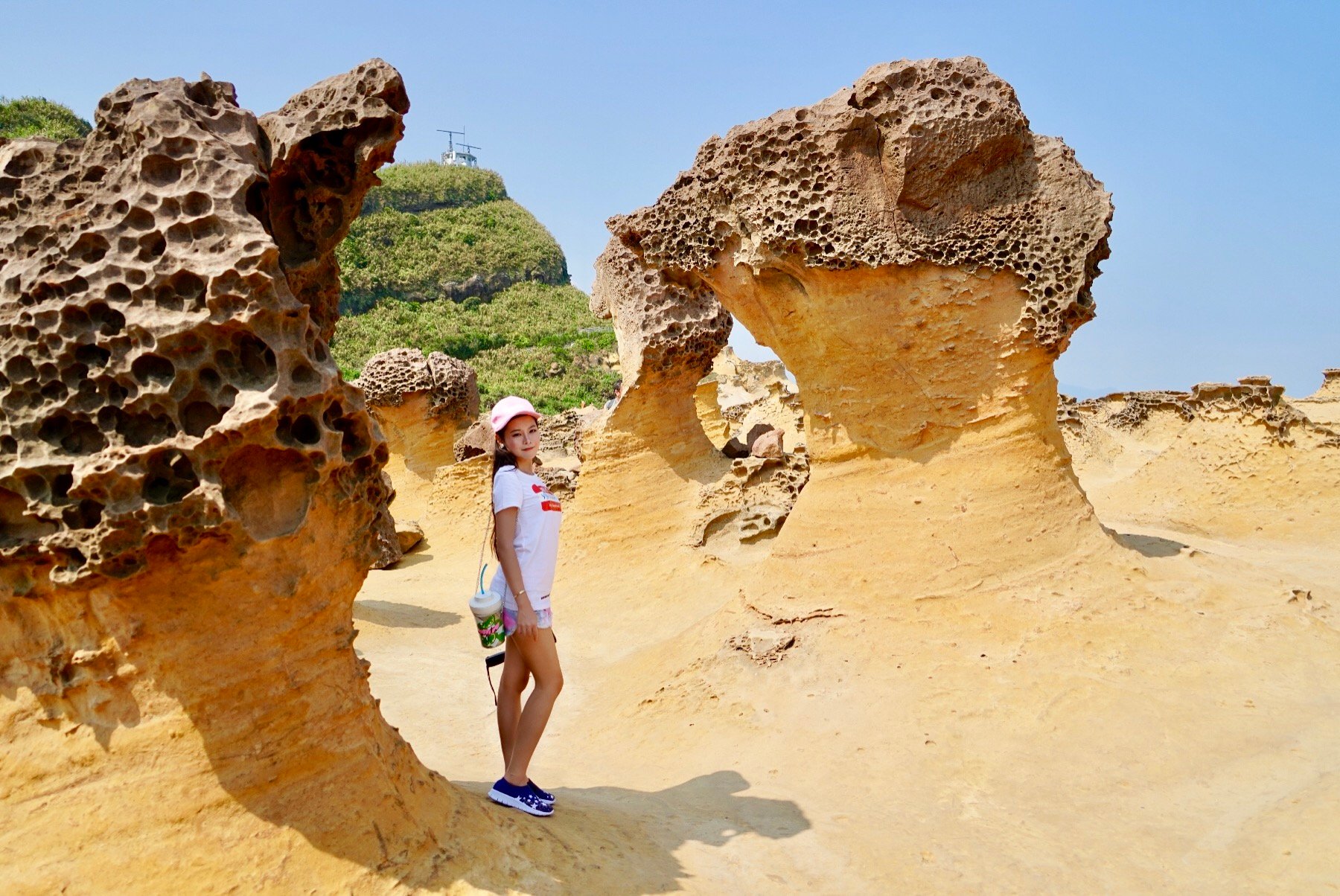
I believe this is supposed to be the Japanese Geisha rock. I'm not quite sure I see it, but it's certainly quite elegant and beautiful looking.
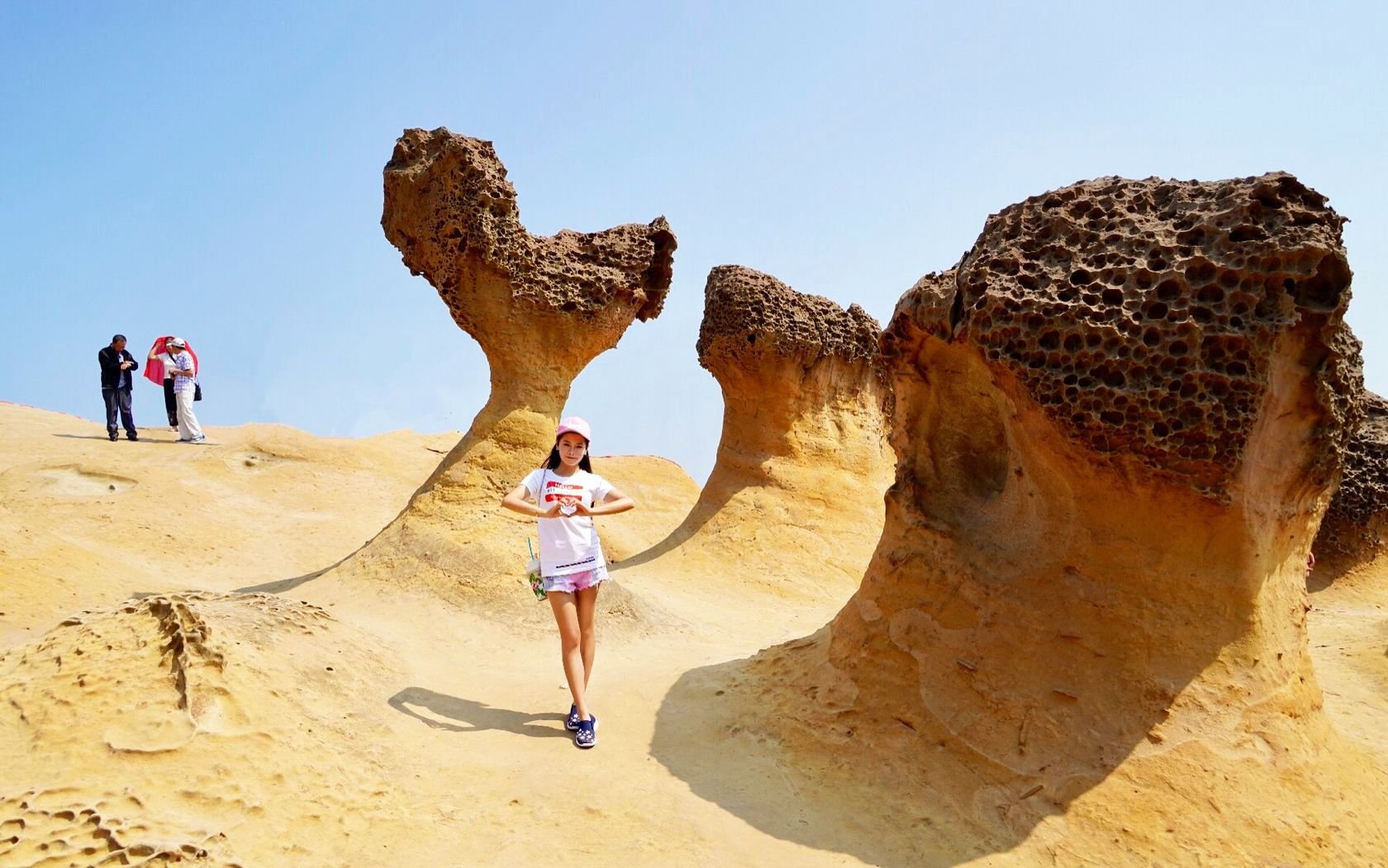
Just to the bottom right where this picture was taken, is the Mazu cave. Mazu is the Chinese goddess of the sea, and the cave is named after her because of the statue that was previously placed inside the cave. Because of the frequent inclement weather conditions, the statue was moved away. Legend has it that Mazu made a presence before a fisherman demanding to be moved to Jinshang. This is where the Ci Hu Temple was then erected to consecrate the Sea Goddess.
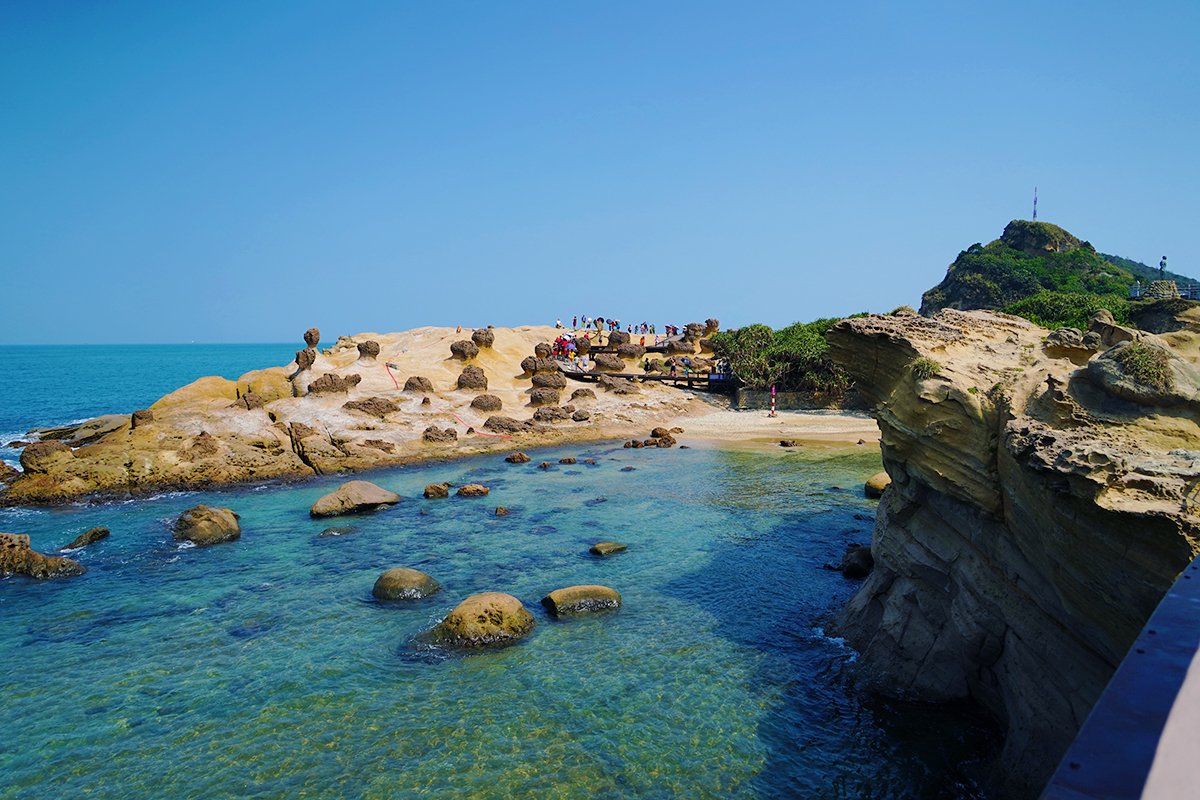
This is the statue of Lin Tian Zhen. Most statues are erected as a sign of respect for high ranking person(s), or persons of notable importance. Lin Tian Zhen was an ordinary fisherman but with a heroic heart. On March the 18th, 1964, a group of students visited the area and one of them fell into the sea. This was before any security barriers were put up, nor was there any official scenic area for visitors. A local fisherman saw the student in the sea, and dived in to rescue him. Sadly, both ended up drowning and upon hearing this story, the President Chiang Kai-Shek ordered a statue to be built of Lin Tian Zhen in honour of his bravery.
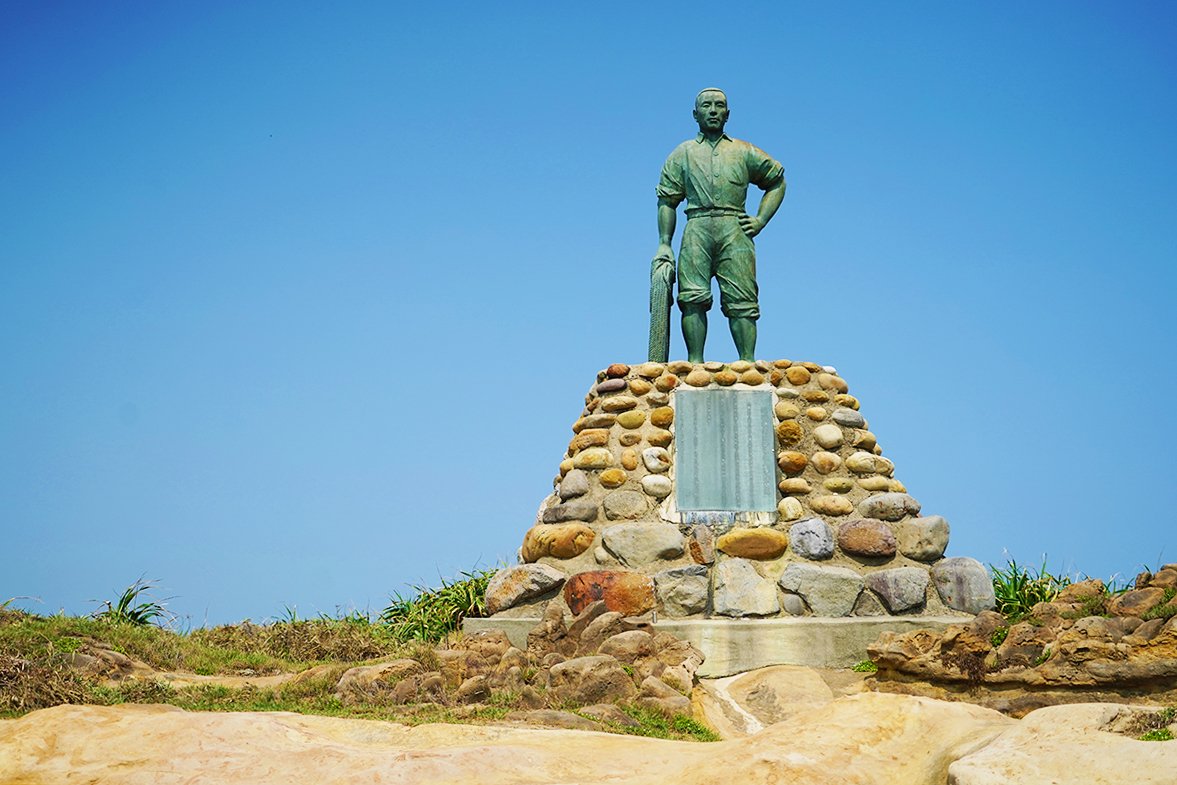
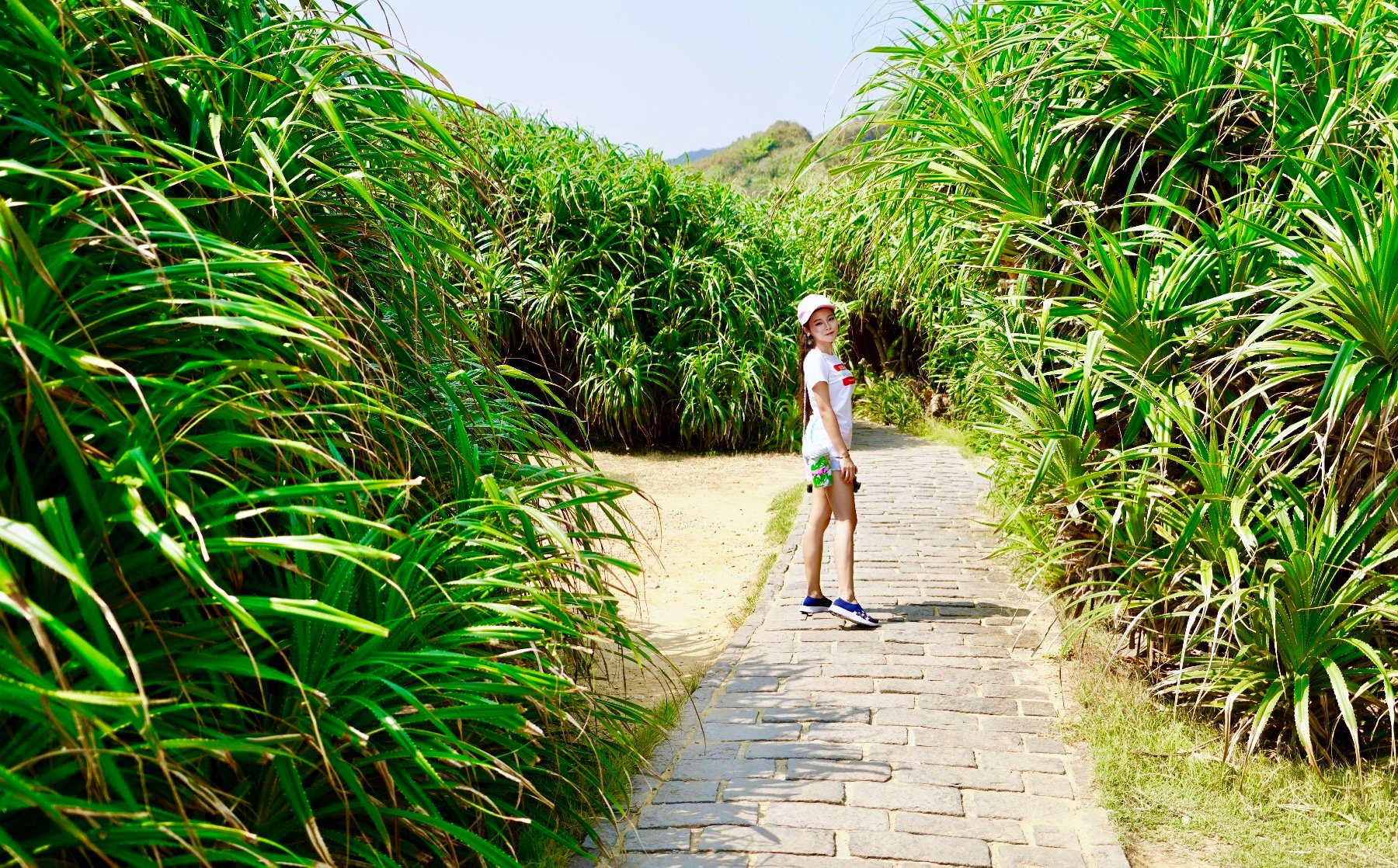
I thought this shot was quite funny, look at all those umbrellas! (They're used to shade from the sun)
This is one of the 'Pineapple Bun' rocks sitting in a little notch on top of the larger bean curd like rocks. Who knew there can be food like rocks too!?
And finally, the star of the show! The Queen Head mushroom rock!As you can see, it's such an important and iconic rock that they have surrounded it with a perimeter of smaller rocks to stop people from touching it.
The man in the picture is standing on the walkway where people queue to take pictures.

According to geologists, the rock forming the Queens Head is around 4000 years old. It wasn't until around 1962 that the top part of the rock fractured and then broke off leaving the side of the head looking like side profile of Queen Elizabeth.
The neck of the Queens Head has suffered aggressive erosion over the years as well as perturbation from mankind. Though some measures have been put in place to try prolong the life of the Queens Head, it's collapse is an inevitability.
I'm very lucky to have a picture with the Queen Head whilst it's still standing. One of the reasons Yehliu Geopark is so popular is because of this landmark. Who knows what will happen when the Queens Head falls one day?
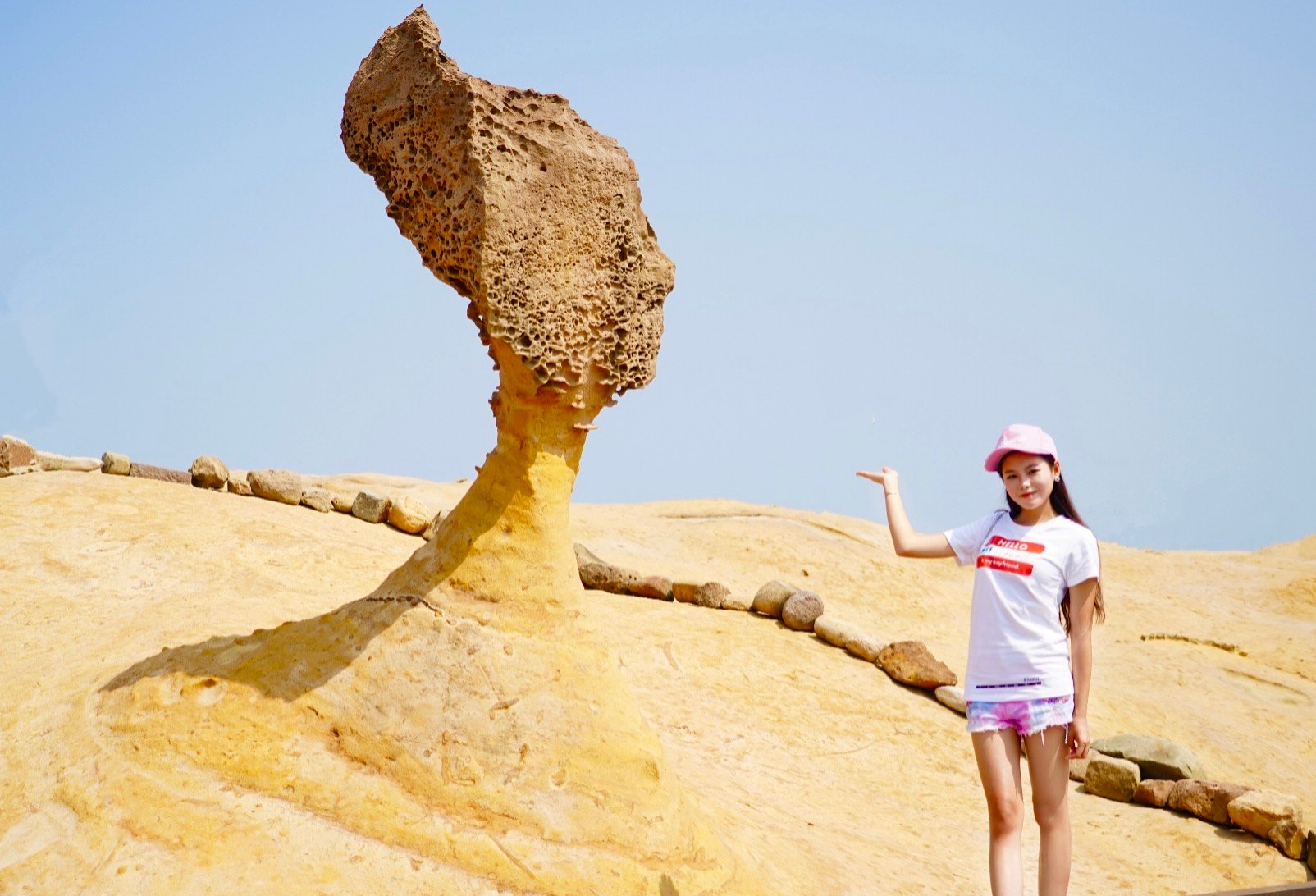
Please check out my video walking through Yehliu Geopark!
Yehliu's Geopark is a wonderful example of mother natures ability to forge unworldly objects that capture the fascination of people throughout the ages. The Queens Head and other strange and wonderful rock formations make Yehliu a unique landscape on this tropical Island and indeed the world. Not a single mushroom rock will be formed the same as another, and neither are their current states "set in stone" as perpetual weathering and erosion will one day wash away natures' sculptures.
Visit while they're still around!
Make sure you upvote if you liked the post, follow me for more, and leave a comment to let me know what you think!

我眼里的台湾,有着很多面的性格,它既展现了充满人情味的传统风貌,散发出趣味十足的年轻活力,也呈现了奇特瑰丽的自然景色。台湾很小,也很大,这里的山脉,湖潭,大海和峡谷,形态各异,给了我丰富多彩,无与伦比的旅行体验。之前带大家探寻了有着深厚文化历史积淀的人文景观,今天我们一起走进台湾新北市万里区的野柳风景区,体会一下独具特色的台湾自然风光吧。
大自然是有多么眷顾这个四面环海的宝岛呀,台湾自古以来都占据了重要的地理位置,虽然土地面积不大,却拥有着丰富的生态资源,和各国鲜有见到的特殊地貌景观。眼前的野柳景区是是大屯山脉突出海面的岬角,有1700公尺的长度。这片海岸历经了千万年的日晒,波浪的侵蚀,岩石风化和地壳运动,生成了罕见的地形和地质景观。就此,野柳奇岩成为了世界奇观之一,吸引了大批游客和专家门前来观赏和研究。刚走进公园没多远,就看到了绝妙精致的海景,水青草绿,眼前的画面瞬间有一种大片既视感。沿着小桥走过对岸,就看到了远处密布着奇形怪状的金色岩石,我加快了脚步,想要以最快的速度近距离感受它们独有的魅力。当一颗颗大大小小,错落有致的蘑菇形状岩石矗立在我身旁时,宛若穿越到了远古时代,又像自己深陷在科幻电影的场景中,此景此物激发出我无限的新奇和对未知的探寻。
这些地质奇观,简直是大自然创造的杰作,一颗岩石,一朵浪花,都可以是无限大的想象。有的像蘑菇,有的像人物,有的像动物,千姿百态,惟妙惟肖。大自然的雕琢似乎遵循着一个简单的定律,坚硬的岩石凸出,较软的岩层凹陷。例如我身旁这个高大的岩石,就是由于岩石质软,再受到海水侵蚀,行成女人细长的脖子,人们给它起了个可爱富有灵气的名字——俏皮公主。大自然这位大艺术家,总会给我们别样的惊喜,就像眼前这公主模样的岩石,精美细致的形态,让我有些难以想象它竟然是一个纯天然,没有经过任何人工雕琢的岩石。在传说里,2000多万年前的台湾还沉睡在海底,而附近海域福建一带冲下的泥沙,一层层堆积成沙岩层,在后来的造山运动中将沉积岩挤出海面,就形成了现在的台湾岛,而野柳地质公园正是岩层的一部分。
接着往高处走,会看见一座铜像,为了纪念一位在海中舍己救人的英雄——林添祯。看了之后我不禁感慨,美丽的海水孕育了生命也同时吞噬着生命。从高处望下去,风景一览无余。石头窝里生出的小颗石头可爱极了。那条正在爬坡的长长队伍,就是要去看野柳公园的镇园之石——女王头的队伍,花花绿绿的太阳伞确实让这片岩石地增色不少。女王头位于突起的斜缓石坡上,高达2米,它是一颗历经风化的蕈状石,有着修长的脖子,优美的脸部线条,散发着雍容尊贵的女王气质,让我感慨自然界的造化神工是如此美妙,令人惊叹。站在高处,面朝大海,心情无比舒畅,心灵得到洗礼。多么感慨能够观赏到这样珍贵的天然资源,感受到人与自然的和谐。今天的野柳风景区探索之旅就要告于段落了,之后还有更多精彩的游记想要分享给大家。

